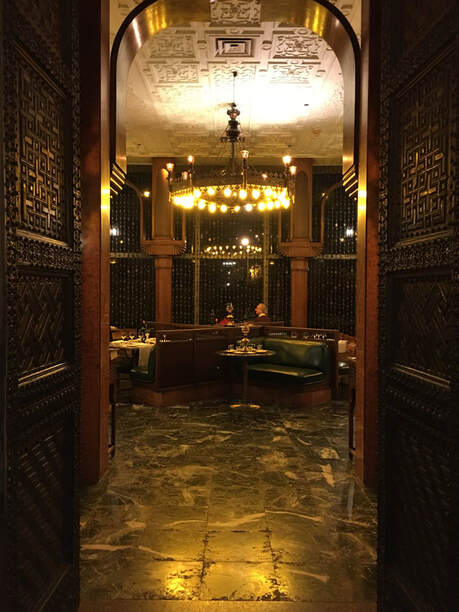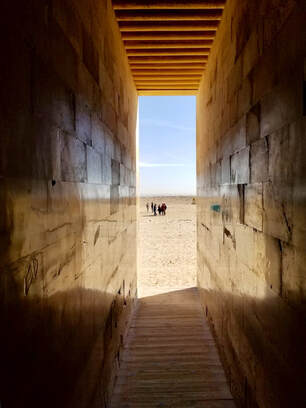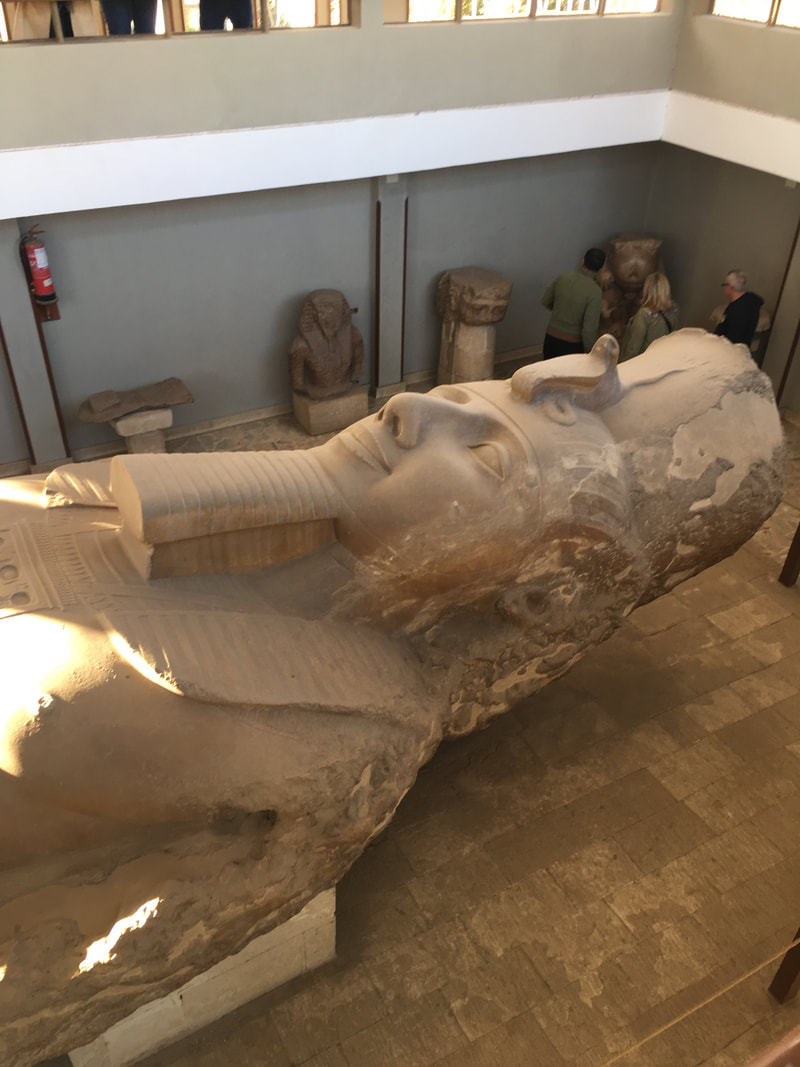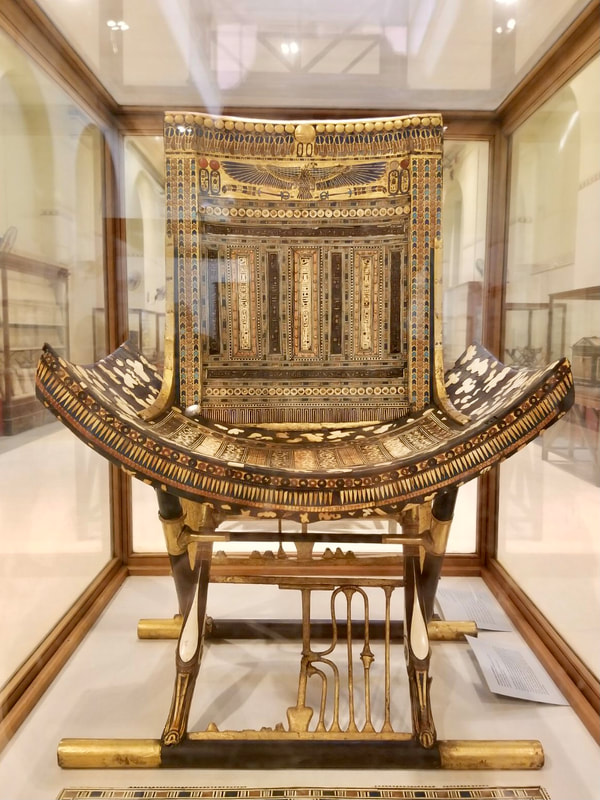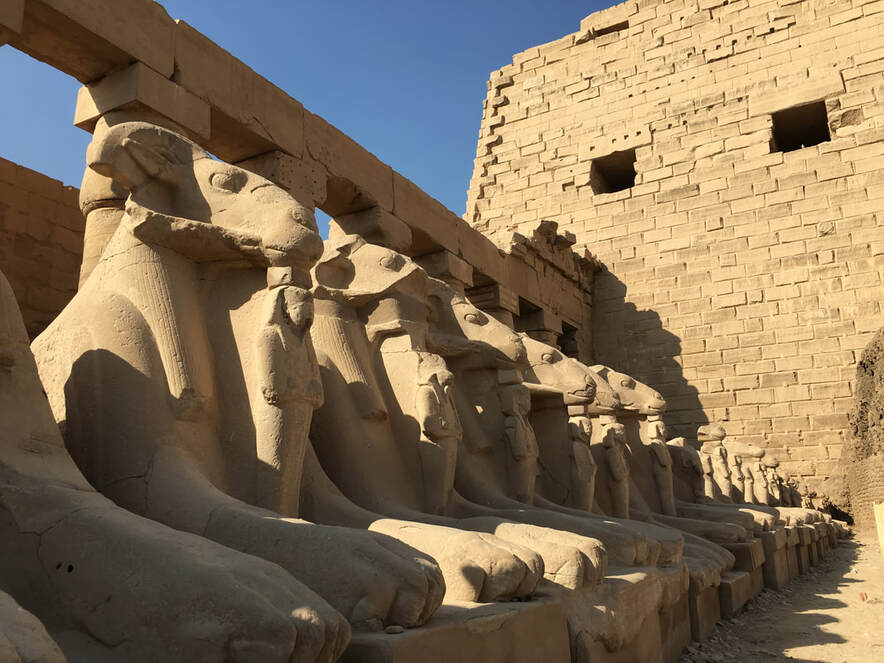Where history begins!
You can discover :
Mythology, Architecture , Pharaohs, Kingdoms, Treasures, Pyramids , Secrets, Tombs... everything about an incredible civilization.
You can travel:
In Hot Air Balloon through the sky of Luxor. Take a Cruise down the Nile, visiting each temple as you go. Ride a Camel. Explore museums and Bazaars. An adventure waiting to be lived.
Mythology, Architecture , Pharaohs, Kingdoms, Treasures, Pyramids , Secrets, Tombs... everything about an incredible civilization.
You can travel:
In Hot Air Balloon through the sky of Luxor. Take a Cruise down the Nile, visiting each temple as you go. Ride a Camel. Explore museums and Bazaars. An adventure waiting to be lived.
Discover Cairo, with dreamingantstravel and our partner Spring Tours Egypt. There, you will visit ,the most important attractions in Cairo, such as the Egyptian Museum, where you will find the greatest collection of Ancient Egypt antiquities, and Egypt's Pyramids, which are famous for reflecting the grandeur of the Egyptian civilization. Cairo, also known as the City of Thousand Minarets, is rich with monuments depicting the majesty of the Islamic civilization such as the Citadel of Salah El Din and Sultan Hassan Mosque.
Step back in time and sail down the Nile River, ride a camel in the desert past the iconic pyramids, shop for exotic spices at the world's oldest and most famous bazaar, Khan el Khalili.
Packages to Cairo include airfare, visa, 5 star hotel facing the pyramids, private driver, and English speaking tour guide. It will be the most unforgettable experience of your life.
Rates based on double occupancy. Prices vary depending on month of travel.
Email dreamingantstravel@yahoo.com for more info.
Step back in time and sail down the Nile River, ride a camel in the desert past the iconic pyramids, shop for exotic spices at the world's oldest and most famous bazaar, Khan el Khalili.
Packages to Cairo include airfare, visa, 5 star hotel facing the pyramids, private driver, and English speaking tour guide. It will be the most unforgettable experience of your life.
Rates based on double occupancy. Prices vary depending on month of travel.
Email dreamingantstravel@yahoo.com for more info.
The Spell that Never Ends !
Photos from our Egypt experience!
Mena House Hotel
There is nothing better after a long flight , a long rest ;and for that, we have the Mena House Hotel, which belongs to the Marriott company,
Mena House Hotel is a luxury, historic Egyptian property, with views of the ancient pyramids, tropical gardens, 24-hour laundry service, limousine service, a heated outdoor pool, a spa and gym, golf, and elegant meeting rooms.
Your package includes a luxurious room at the world famous Mena House. Built in the 1800s, this 5 star hotel is set on 40 acres of plush gardens and is the site of the Egypt’s first ever swimming pool. During your stay you will have a once in a lifetime opportunity to enjoy breakfast each morning facing the iconic Giza pyramids. Plus, you will join the roster of such famous people as Agatha Christie, Winston Churchill, Charlie Chaplin, and Frank Sinatra, who were among the hotel’s many notable guests over the years.
Mena House Hotel is a luxury, historic Egyptian property, with views of the ancient pyramids, tropical gardens, 24-hour laundry service, limousine service, a heated outdoor pool, a spa and gym, golf, and elegant meeting rooms.
Your package includes a luxurious room at the world famous Mena House. Built in the 1800s, this 5 star hotel is set on 40 acres of plush gardens and is the site of the Egypt’s first ever swimming pool. During your stay you will have a once in a lifetime opportunity to enjoy breakfast each morning facing the iconic Giza pyramids. Plus, you will join the roster of such famous people as Agatha Christie, Winston Churchill, Charlie Chaplin, and Frank Sinatra, who were among the hotel’s many notable guests over the years.
Giza Piramid
The Great Pyramid of Giza (also known as the Pyramid of Cheops or Jufu) is, in addition to the largest of the pyramids in Egypt, the oldest of the seven wonders of the ancient world and the only one that still exists. It was ordered to be built by Pharaoh Cheops of the fourth dynasty of Ancient Egypt.
The Great Pyramid stands at the height of pharaonic power during the Old Kingdom, and shows the great organizational skills and knowledge acquired by Egyptian artisans and technicians to erect such monuments, albeit with apparently simple means. It is the best example of all the pyramids made in Egypt, the culmination of a process of improvement of construction techniques that began in the time of Dyeser and continued in that of Seneferu.
The Great Pyramid stands at the height of pharaonic power during the Old Kingdom, and shows the great organizational skills and knowledge acquired by Egyptian artisans and technicians to erect such monuments, albeit with apparently simple means. It is the best example of all the pyramids made in Egypt, the culmination of a process of improvement of construction techniques that began in the time of Dyeser and continued in that of Seneferu.
Saqqara
Saqqara is the site of the main necropolis of the city of Memphis, on the west bank of the Nile, located about 30 km south of Cairo and 22 km southeast of the pyramids of Giza. Functional from Dynasty I (ca. 3050 BC) to Christian times (ca. 540).
During the Old Kingdom, Saqqara was abandoned as a royal burial place, and Giza was chosen as the new royal necropolis during Dynasty IV. Shepseskaf used it again, as did the subsequent pharaohs of the V and VI dynasties.
During the Old Kingdom, Saqqara was abandoned as a royal burial place, and Giza was chosen as the new royal necropolis during Dynasty IV. Shepseskaf used it again, as did the subsequent pharaohs of the V and VI dynasties.
Outdoor Museum of Memphis
Located in the area where the ancient city of Memphis was, the visitor finds here an Open Air Museum in which some colossi, sculptures, stelae, fragments of stelae, sarcophagi ... located in the area are exhibited. Only one part is roofed to give protection to a beautiful colossus that shows the pharaoh Ramses II, although other pieces are also preserved here. Memphis was the most important city in Egypt during the Old Kingdom and on the other side of the Nile was its gigantic necropolis at Saqqara. As a city, the area of palaces and the temple of Ptah must have been very important, although what the son especially known is the White Wall that surrounded it. In the Middle and New Kingdom, the city remained a first-rate government and administrative center, and the relevance of the Ptah cult lived on for millennia.
Muhammad Ali Mosque
The Mehmet Ali Pasha Mosque, also known as the Alabaster Mosque is a mosque located in the highest part of the Citadel of Cairo, in the capital of Egypt. It was built at the behest of the Ottoman governor Mehmet Ali between 1830 and 1848. It was the largest mosque built in the first half of the 19th century and is also the most visible in the Egyptian capital due to its elevated location and the height of its minarets.
It was erected in memory of Tusun Pasha, the eldest son of Mehmet Ali who died in 1816. Today the mosque is an unavoidable visit for tourists, who can contemplate a privileged view of the city from it.
It was erected in memory of Tusun Pasha, the eldest son of Mehmet Ali who died in 1816. Today the mosque is an unavoidable visit for tourists, who can contemplate a privileged view of the city from it.
Egyptian Museum in Cairo
The Egyptian Museum of Cairo or Museum of Egyptian Antiquities, actually called the Egyptian Museum 136 ,000 classified objects from different periods of Egyptian history: Tinite, Old Kingdom, Middle Kingdom, New Kingdom, Third Intermediate Period, Late, Hellenistic and Roman, standing out from other museums not only for the quantity, but also for the importance of many of them. More than two and a half million people visit the museum annually.
The Museum, a historic landmark , is located in the center of Cairo, on Tahrir Square. It was designed in 1900 by the French architect Marcel Dourgnon in a neoclassical style, opening in 1902.
The Museum, a historic landmark , is located in the center of Cairo, on Tahrir Square. It was designed in 1900 by the French architect Marcel Dourgnon in a neoclassical style, opening in 1902.
Philae Temple
Philae was the name of an island located in the Nile River, eleven kilometers south of Aswan . It was famous for the temples erected during the Ptolemaic and Roman periods dedicated to the worship of the goddess Isis that spread throughout the Mediterranean, maintaining its veneration in the temple of File until it was banned in the time of Justinian I, the year 535 AD. C.
The island of File was submerged in the 20th century under the waters impounded by the Aswan Dam, although under the patronage of Unesco the temples were dismantled, moved and rebuilt on the nearby islet of Agilkia.
The island of File was submerged in the 20th century under the waters impounded by the Aswan Dam, although under the patronage of Unesco the temples were dismantled, moved and rebuilt on the nearby islet of Agilkia.
Edfu Temple
The Temple of Edfu is an Ancient Egyptian temple located on the west bank of the Nile in the city of Edfu that during the Greco-Roman period was known as Apolinópolis Magna, dedicated to the god of the gods, Horus-Apollo.
It is the second largest temple in Egypt after Karnak and one of the best preserved. The temple, dedicated to the falcon god Horus, was built during the Hellenistic period between 237 and 57 BC. The inscriptions on its walls provide important information about language, mythology and religion during the Greco-Roman world in Ancient Egypt. In particular, that inscribed texts on the construction of the temple "provide details of its construction and also preserve information on the mythical interpretation of this and other temples such as the Island of Creation."
One of the differences between the Edfu temple and the Karnak or Luxor temples is that it was built on a plan, that is, planning was followed and parts were not added as time passed and different pharaohs ruled. And it shows in that it has a very homogeneous style and is very orderly. In addition, you will see that the state of conservation is really good.
It is the second largest temple in Egypt after Karnak and one of the best preserved. The temple, dedicated to the falcon god Horus, was built during the Hellenistic period between 237 and 57 BC. The inscriptions on its walls provide important information about language, mythology and religion during the Greco-Roman world in Ancient Egypt. In particular, that inscribed texts on the construction of the temple "provide details of its construction and also preserve information on the mythical interpretation of this and other temples such as the Island of Creation."
One of the differences between the Edfu temple and the Karnak or Luxor temples is that it was built on a plan, that is, planning was followed and parts were not added as time passed and different pharaohs ruled. And it shows in that it has a very homogeneous style and is very orderly. In addition, you will see that the state of conservation is really good.
Hatshepsut Temple
The funerary temple of Hatshepsut, known as Djeser-Djeseru ("the sublime of the sublime") is located in the complex of Deir el Bahari, on the western fringe of the River Nile, near the Valley of the Kings, in Egypt. This funerary temple was built in honor of Amon-Ra, the god of the Sun, and is located next to the funerary temple of Mentuhotep II. It is considered "one of the incomparable monuments of Ancient Egypt".
The reliefs at the Temple of Hatshepsut tell the story of the divine birth of Queen-Pharaoh Hatshepsut, the first of its kind.
The Temple of Hatshepsut is considered the Egyptian monument whose style is closest to that of classical architecture. Representative work of the funerary architecture of the New Kingdom, which emphasizes the magnified image of the pharaoh erecting shrines to honor the gods with whom he will live after death.
The reliefs at the Temple of Hatshepsut tell the story of the divine birth of Queen-Pharaoh Hatshepsut, the first of its kind.
The Temple of Hatshepsut is considered the Egyptian monument whose style is closest to that of classical architecture. Representative work of the funerary architecture of the New Kingdom, which emphasizes the magnified image of the pharaoh erecting shrines to honor the gods with whom he will live after death.
Kom Ombo Temple
The Temple of Kom Ombo is an unusual double temple built during the reign of the Ptolemaic Dynasty, in the Egyptian city of Kom Ombo. In the period of Roman domination some extensions were made. The construction is unique due to its double design, which means that there were duplicate entrances, courtyards, halls, chapels, and shrines for two gods: Sobek and Haroeris.
The decoration of the internal face of the rear wall of the temple is of particular interest, since it represents a collection of surgical instruments.
Many parts of the temple have been destroyed by the action of the Nile, earthquakes, and its stones were even used for other later constructions. Some of the reliefs inside were disfigured by the Copts, who used the temple as a church.
Some of the three hundred crocodile mummies discovered in the area are on display in the so-called Crocodile Museum.
The decoration of the internal face of the rear wall of the temple is of particular interest, since it represents a collection of surgical instruments.
Many parts of the temple have been destroyed by the action of the Nile, earthquakes, and its stones were even used for other later constructions. Some of the reliefs inside were disfigured by the Copts, who used the temple as a church.
Some of the three hundred crocodile mummies discovered in the area are on display in the so-called Crocodile Museum.
Luxor and Karnak Temples
The Karnak Temple is the largest temple in Egypt and remains are still found today and it is still being rebuilt. The enclosure in which it is located has 2,400 meters of perimeter and is surrounded by an 8-meter-thick adobe wall. Built by multiple pharaohs between 2200 and 360 BC, the Karnak Temple contains within it the great temple of Amun, other minor temples, chapels and the great sacred lake. The most important pharaohs involved in its construction were Hatshepsut, Seti I, Ramses II and Ramses III.
Probably the most spectacular thing about the temple is its hypostyle hall; with more than 5,000 square meters it contains 134 columns, of which the 12 central ones are wider and raised the roof, now destroyed, to 23 meters high.
At the entrance of the temple, before crossing the first pylon, you will be welcomed by 40 ram-headed sphinxes. It is the beginning of the Avenue of the Sphinxes that led to the Temple of Luxor and to the Nile. Karnak is made up of a series of "more important" complexes and other smaller temples and rooms, but these are the main ones:
Great Temple of Amun : patron god of Thebes and later, national god acquiring great importance when Amun is "fused" with the sun god Ra, forming Amun-Ra or Amun-Re.
Montu Campus : solar god and war god, represented with the head of a falcon with the sun disk and two feathers.
Mut enclosure : also known as the mother goddess. She has been identified as the wife of Amun-Re and mother of the moon god Jonsu.
Temple of Ptah : creator god of Egyptian mythology, builder, patron of craftsmen and architects. He was credited with healing power.
Temple of Jonsu : associated with medicine, protector of the sick and fertility on earth.
Temple of Opet : Associated with the Opet party
The Temple of Luxor, located in the heart of ancient Thebes, was essentially built under the Egyptian 18th and 19th dynasties. It was consecrated to the god Amun under his two aspects of Amun-Ra (Ra, was considered the god of the sky, god of the Sun and the origin of life in Egyptian mythology). The oldest parts currently visible date back to Amenhotep III and Ramses II.
The temple of Luxor was an essential element of the religious urbanism of Thebes as well as for Ammonian theology. When the pharaohs of the XXI dynasty chose Tanis as the new capital, they wanted to build their city with the same model, foreseeing in the south of the set a new temple dedicated to Amun of Opet, which was also attached to the temple consecrated to Amun-Ra to the north.
Probably the most spectacular thing about the temple is its hypostyle hall; with more than 5,000 square meters it contains 134 columns, of which the 12 central ones are wider and raised the roof, now destroyed, to 23 meters high.
At the entrance of the temple, before crossing the first pylon, you will be welcomed by 40 ram-headed sphinxes. It is the beginning of the Avenue of the Sphinxes that led to the Temple of Luxor and to the Nile. Karnak is made up of a series of "more important" complexes and other smaller temples and rooms, but these are the main ones:
Great Temple of Amun : patron god of Thebes and later, national god acquiring great importance when Amun is "fused" with the sun god Ra, forming Amun-Ra or Amun-Re.
Montu Campus : solar god and war god, represented with the head of a falcon with the sun disk and two feathers.
Mut enclosure : also known as the mother goddess. She has been identified as the wife of Amun-Re and mother of the moon god Jonsu.
Temple of Ptah : creator god of Egyptian mythology, builder, patron of craftsmen and architects. He was credited with healing power.
Temple of Jonsu : associated with medicine, protector of the sick and fertility on earth.
Temple of Opet : Associated with the Opet party
The Temple of Luxor, located in the heart of ancient Thebes, was essentially built under the Egyptian 18th and 19th dynasties. It was consecrated to the god Amun under his two aspects of Amun-Ra (Ra, was considered the god of the sky, god of the Sun and the origin of life in Egyptian mythology). The oldest parts currently visible date back to Amenhotep III and Ramses II.
The temple of Luxor was an essential element of the religious urbanism of Thebes as well as for Ammonian theology. When the pharaohs of the XXI dynasty chose Tanis as the new capital, they wanted to build their city with the same model, foreseeing in the south of the set a new temple dedicated to Amun of Opet, which was also attached to the temple consecrated to Amun-Ra to the north.
Botanical Garden
Kitchener Island, Island of Plants is a small oval-shaped island that is also a botanical garden, located on the Nile, in Aswan, Egypt.
Perfect place for photographing and spending a good afternoon watching the sun go down you can breathe a tremendous peace is like an oasis full of plants
Perfect place for photographing and spending a good afternoon watching the sun go down you can breathe a tremendous peace is like an oasis full of plants
Wandering around...
Khan el-Khalili Bazaar
It is an old commercial area, although some businesses have their own small workshops.
The origins of the souk date back to 1382, when the emir Dyaharks el-Khalili built a large caravanserai (or jan). A caravanserai was an alhóndiga or inn for merchants, with rooms for their animals and cargo, and sometimes the point of reference for economic activity in the areas located in its surroundings. This caravanserai still exists, between the narrow street of Sikka Khan el-Khalili and Badestan.
It is possible to find all its charm and flavor by walking through its small streets. You don't need a guide, not even a map. If you get lost, just keep walking in one direction, and you will quickly get out of the maze. Shopping is an almost compulsive activity at Khan el-Khalili. You will find articles of all kinds of clothing, souvenirs, rugs, antiques ,lamps, vases and spices .
The origins of the souk date back to 1382, when the emir Dyaharks el-Khalili built a large caravanserai (or jan). A caravanserai was an alhóndiga or inn for merchants, with rooms for their animals and cargo, and sometimes the point of reference for economic activity in the areas located in its surroundings. This caravanserai still exists, between the narrow street of Sikka Khan el-Khalili and Badestan.
It is possible to find all its charm and flavor by walking through its small streets. You don't need a guide, not even a map. If you get lost, just keep walking in one direction, and you will quickly get out of the maze. Shopping is an almost compulsive activity at Khan el-Khalili. You will find articles of all kinds of clothing, souvenirs, rugs, antiques ,lamps, vases and spices .
Papyrus Institute
In this institute they explain all the technique to make the final designs. They start with the plant and explain how it is cut, dried and transformed into a fine fabric and then worked in color. Really very illustrative and very good designs for sale . Its a mandatory visit.
Camel Trips
Make your trip to Egypt unforgettable by booking one of these camel trips in Cairo where you can have excellent views of the three pyramids and a tour of the area. Private trips both at sunrise and sunset, without a doubt an unforgettable experience
Balloon Travels
See the temples of Luxor at dawn with this unforgettable balloon ride that will allow you to see majestic remains of Pharaonic Egypt from a bird's eye view. Visit from the air all tombs and temples of Luxor.
Cruise Trips
A trip to Egypt would never be complete without a cruise on the Nile, the most memorable experience of the trip for most travelers. This 3-day cruise departs from Aswan and goes to Luxor, ancient Thebes.




